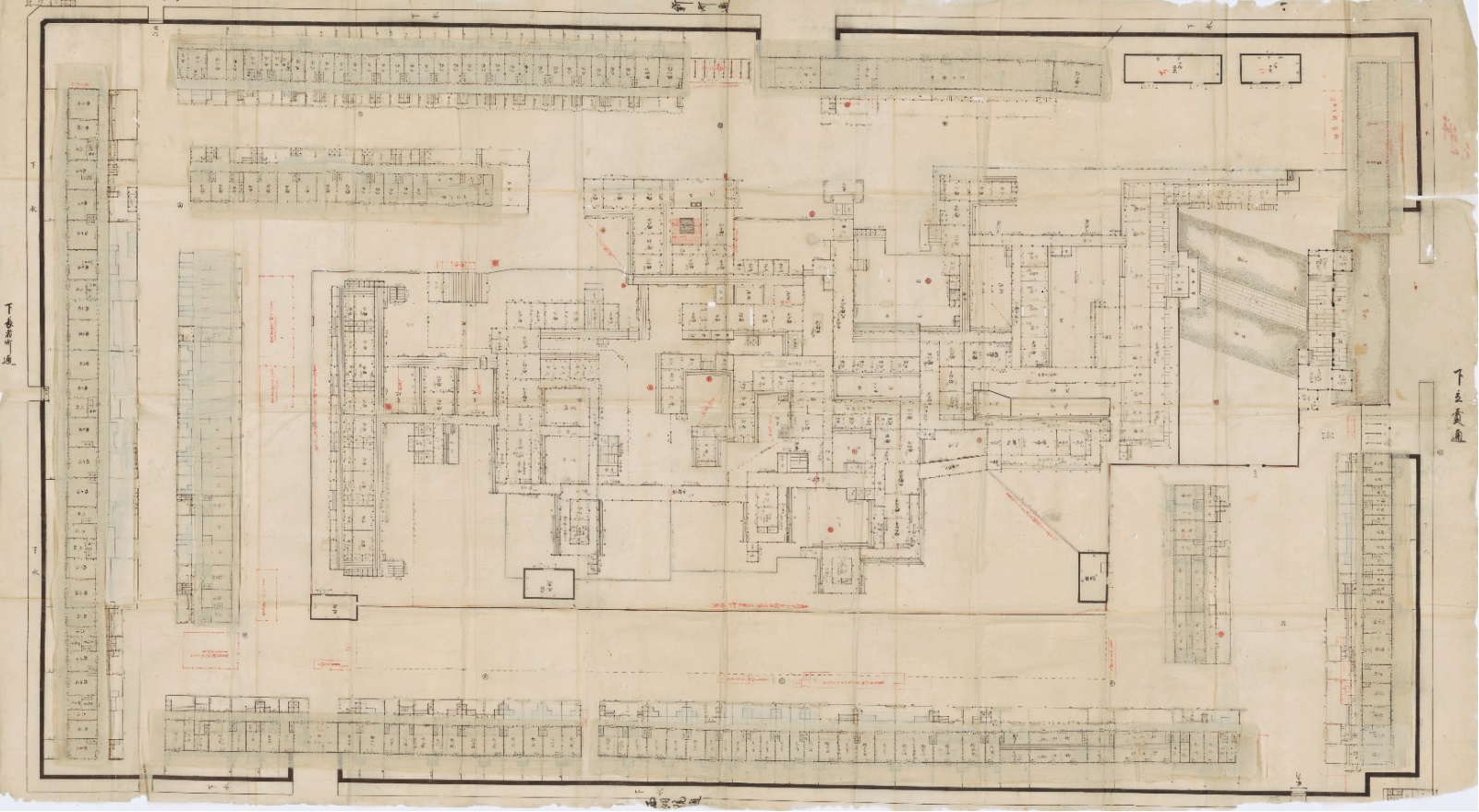Bakufu-no-bu (幕府之部; Tokugawa Government) consists of plans relating to Kyoto Shoshidai (京都所司代; Shogun's senior representative monitoring the Imperial Court in Kyoto), Kyoto Shugoshoku (京都守護職; military commissioner of Kyoto) and other Tokugawa Government offices. These are part of Nakai Collection passed down through the Nakai Family, the Tokugawa Government's master carpenter family in Kyoto.
 Among these plans, “Keiou ganushidoshi hachigatsu shugoshoku oyakutaku kamiyashiki dekigata ezu tadashi yonbukei (慶応元丑年八月 守護職御役宅上屋舗出来形絵図 但四分計)” is an architectural plan of the entire residence of Kyoto Shugoshoku and includes the layout of the buildings and rooms as well as the details of their fittings. This rare material tells us the situations at the end of the Edo Period. Kyoto Shugoshoku is Tokugawa Government’s position newly established in 1862 to maintain the security of Kyoto, to which Katamori Matsudaira (1836-1893), Lord of the Aizu Clan, was appointed. He first placed the headquarters at Konkai Komyo-ji (金戒光明寺) in Higashiyama, and then the construction of the residence was started in 1863 and completed in 1865. The premises border Shinmachi-dori (新町通) to the East, Nishinotoin-dori (西洞院通) to the West, Shimotachiuri-dori (下立売通) to the South and Shimochojamachi-dori (下長者町通) to the North. There were barracks for Clan soldiers along each border. Kyoto Shugoshoku was abolished by Osei Fukko no Daigorei (王政復古の大号令; the Decree for the Restoration of Imperial Rule) just about two months after Taisei Hokan (大政奉還; Restoration of Imperial Rule) in 1868.
Among these plans, “Keiou ganushidoshi hachigatsu shugoshoku oyakutaku kamiyashiki dekigata ezu tadashi yonbukei (慶応元丑年八月 守護職御役宅上屋舗出来形絵図 但四分計)” is an architectural plan of the entire residence of Kyoto Shugoshoku and includes the layout of the buildings and rooms as well as the details of their fittings. This rare material tells us the situations at the end of the Edo Period. Kyoto Shugoshoku is Tokugawa Government’s position newly established in 1862 to maintain the security of Kyoto, to which Katamori Matsudaira (1836-1893), Lord of the Aizu Clan, was appointed. He first placed the headquarters at Konkai Komyo-ji (金戒光明寺) in Higashiyama, and then the construction of the residence was started in 1863 and completed in 1865. The premises border Shinmachi-dori (新町通) to the East, Nishinotoin-dori (西洞院通) to the West, Shimotachiuri-dori (下立売通) to the South and Shimochojamachi-dori (下長者町通) to the North. There were barracks for Clan soldiers along each border. Kyoto Shugoshoku was abolished by Osei Fukko no Daigorei (王政復古の大号令; the Decree for the Restoration of Imperial Rule) just about two months after Taisei Hokan (大政奉還; Restoration of Imperial Rule) in 1868.







































